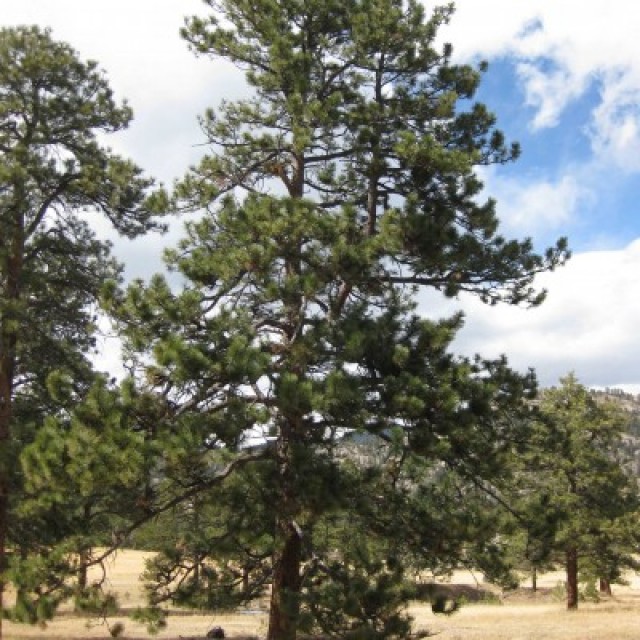COMMON NAME
Ponderosa pine
SCIENTIFIC NAME
Pinus ponderosa
ALSO KNOWN AS
Bull pine, Western yellow pine, Yellow pine
Plant family
Pine (Pinaceae)
Plant group
Conifers
Ponderosa pine is the iconic pine of the interior west, with its thick colorful bark which can be bright orange or yellow in color in open sunny spots. It is the only 3-needle pine in the Rockies.
387 reports
175+
OBSERVERS
387+
OBSERVATIONS
Identification hints
Ponderosa pine is the iconic pine of the interior west, with its thick colorful bark which can be bright orange or yellow in color in open sunny spots. It is the only 3-needle pine in the Rockies. In California, and near its borders in Oregon and Nevada and in the Southwest there are other 3-needle pines and ornamental pines that can be confused with ponderosa. Jeffrey pine is very similar but usually has larger cones up to 38 cm (15 in), and purplish twigs (the twigs are orange to red in ponderosa). Jeffrey pine twigs have a pineapple-like odor. In Arizona and New Mexico Apache pine is found which has longer needles up to 38 cm (15 in).
Did you know?
Ponderosa pine got its name because of its ponderous, or heavy, wood. It is one of the most widely distributed pines in western North America. Ponderosa pine is a major source of timber, which is especially suited for window frames and panel doors. Ponderosa pine forests are also important as wildlife habitat. Quail, nutcrackers, squirrels, and many other kinds of wildlife consume the seeds. Dispersal is aided by chipmunks that store the seeds in their caches.
DISTRIBUTION IN TH U.S.
Arizona
,
California
,
Colorado
,
Idaho
,
Montana
,
North Dakota
,
Nebraska
,
New Mexico
,
Nevada
,
Oklahoma
,
Oregon
,
South Dakota
,
Texas
,
Utah
,
Washington
,
Wyoming
HABITAT
Ponderosa pine is found in rocky hills and low elevations in mountains. It is well adapted to grow on bare rock with its roots following crevices or cracks in the rocks. It needs sun and prefers deep, moist, well-drained soil, but will grow in a wide range of conditions. Ponderosa pine is drought and salt tolerant.
ATTRIBUTES
Leaves
The curved, rigid needles are 3 to 5 in (7.62 to 12.7 cm) long, clustered in bundles of 3. They can be dark green to yellow green. The needles remain attached and continue growing for approximately 5 years.
Pollen Cones
Pollen and seed cones are separate but found on the same tree. The pollen cones are small, yellowish, and found in clusters. The tips of the cone scales are armed with short, sharp, prickles that curve out.
Seed Cones
Seed cones are pineapple-shaped, 3 to 6 in (7.6 to 15 cm) long, and take 2 years to mature. They are borne singly or in clusters of 3 to 5. They are light reddish-brown. The small seeds are about 0.25 in (0.6 cm) long, with a broad terminal wing about 1 in (2.5 cm) long.
Bark
When the tree is young, the bark is dark brown to nearly black. As the tree matures, the bark turns from cinnamon brown to orange-yellow at about 90 years of age. The bark of older trees is split into broad plates covered with small concave scales. The bark has a fragrance of vanilla or butterscotch.
Bloom Time
First pollen is correlated closely with the passing of freezing weather and generally occurs in mid spring.
See Menu
- 2021 Chicago Botanic Garden. All Rights Reserved.
-
Creative Commons
BY-NC-SA 4.0 - Terms of Use
- Privacy Policy
- Data Sharing and Citation Policies
- 2021 Chicago Botanic Garden. All Rights Reserved.



